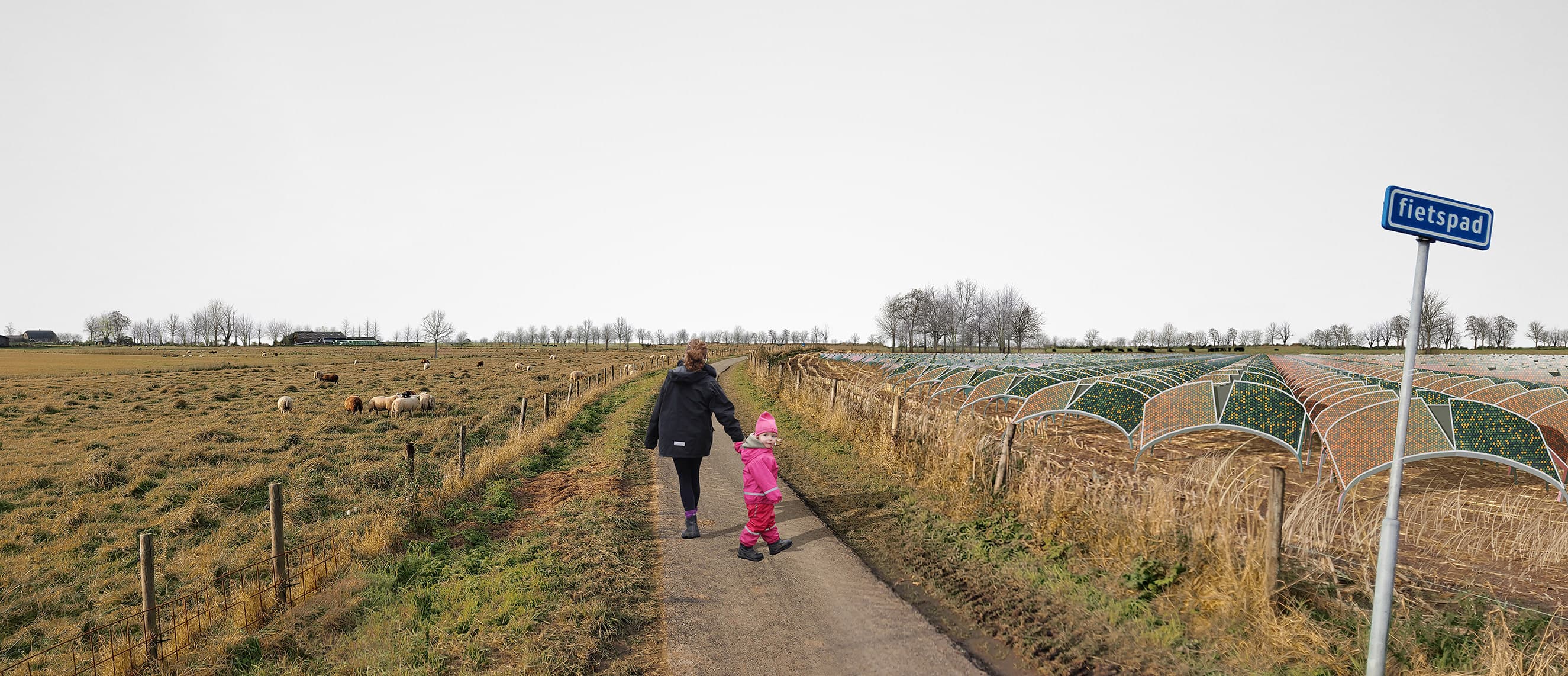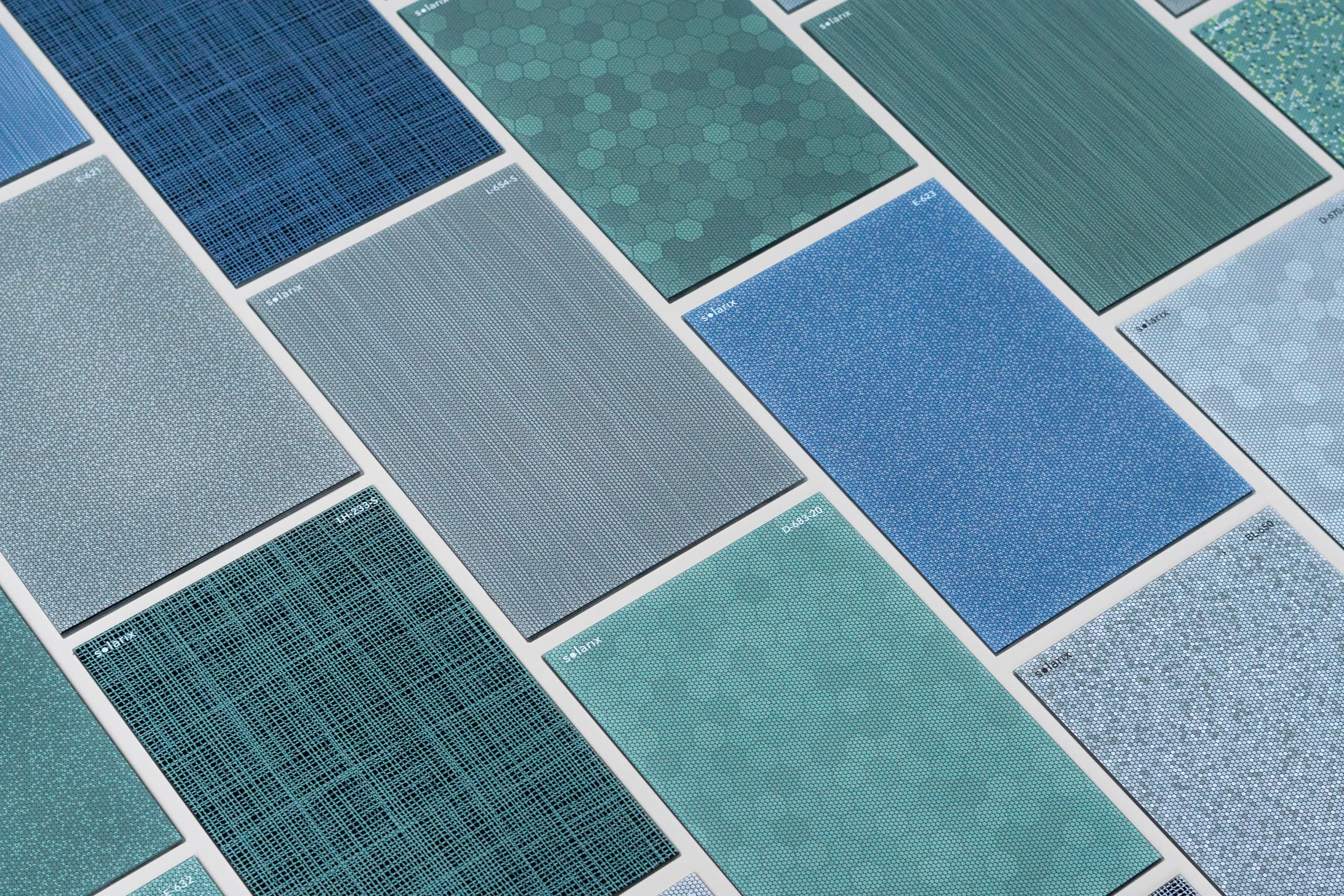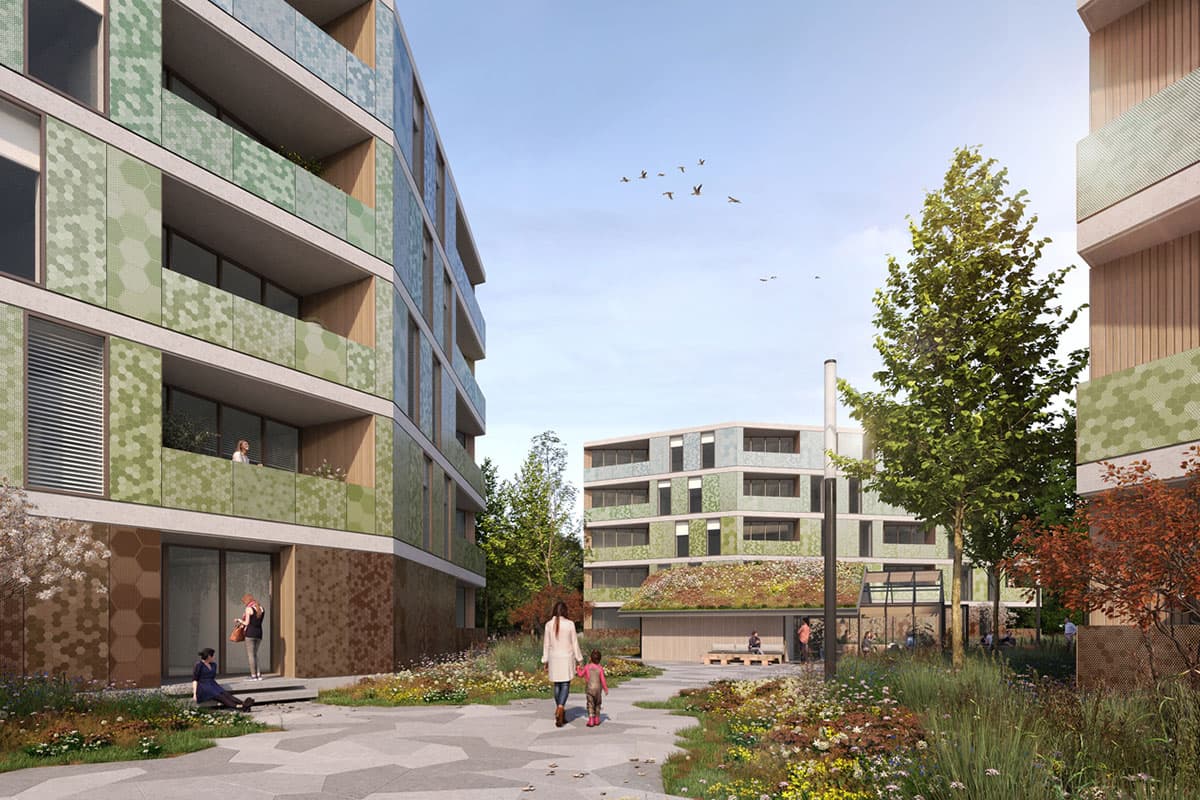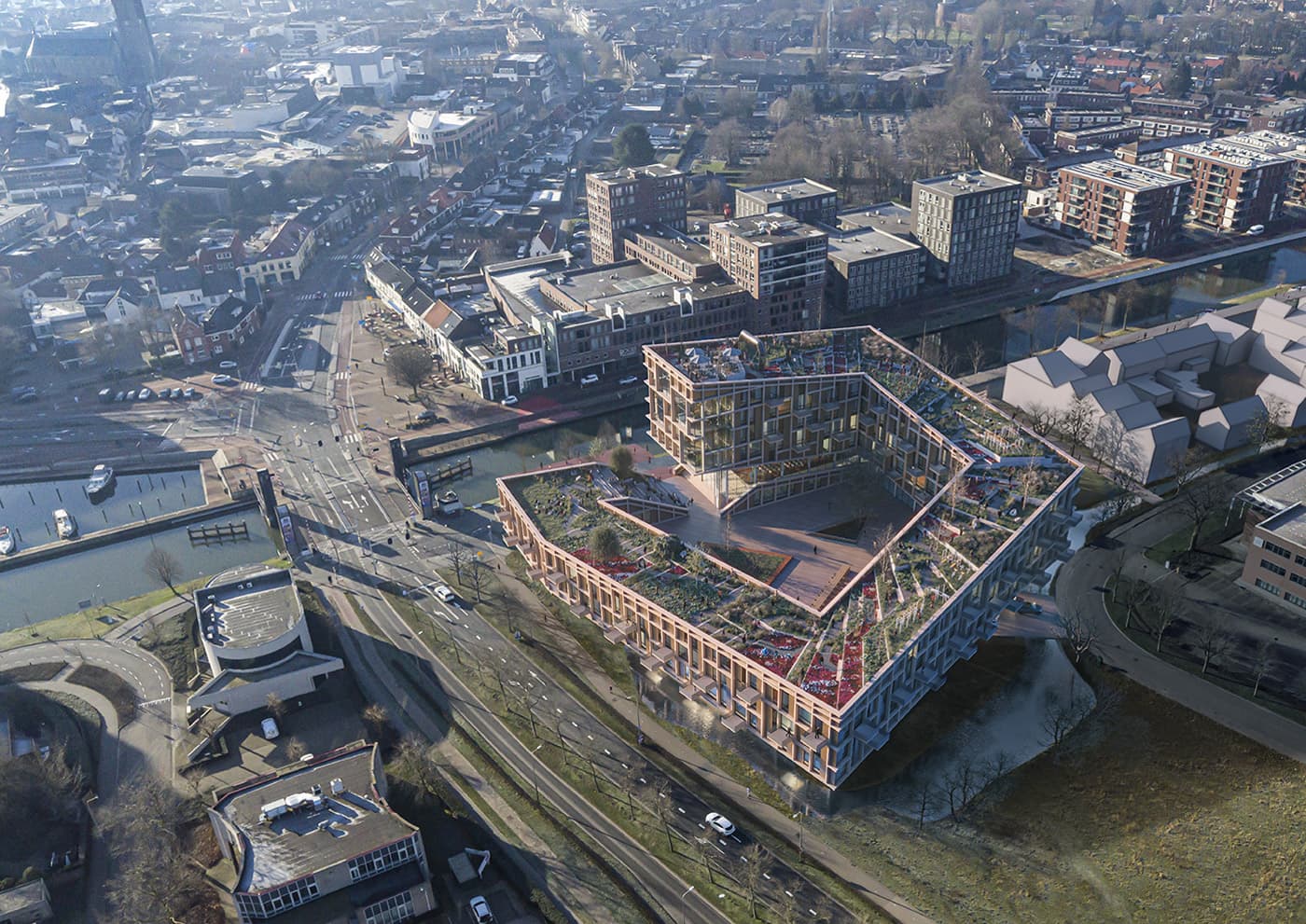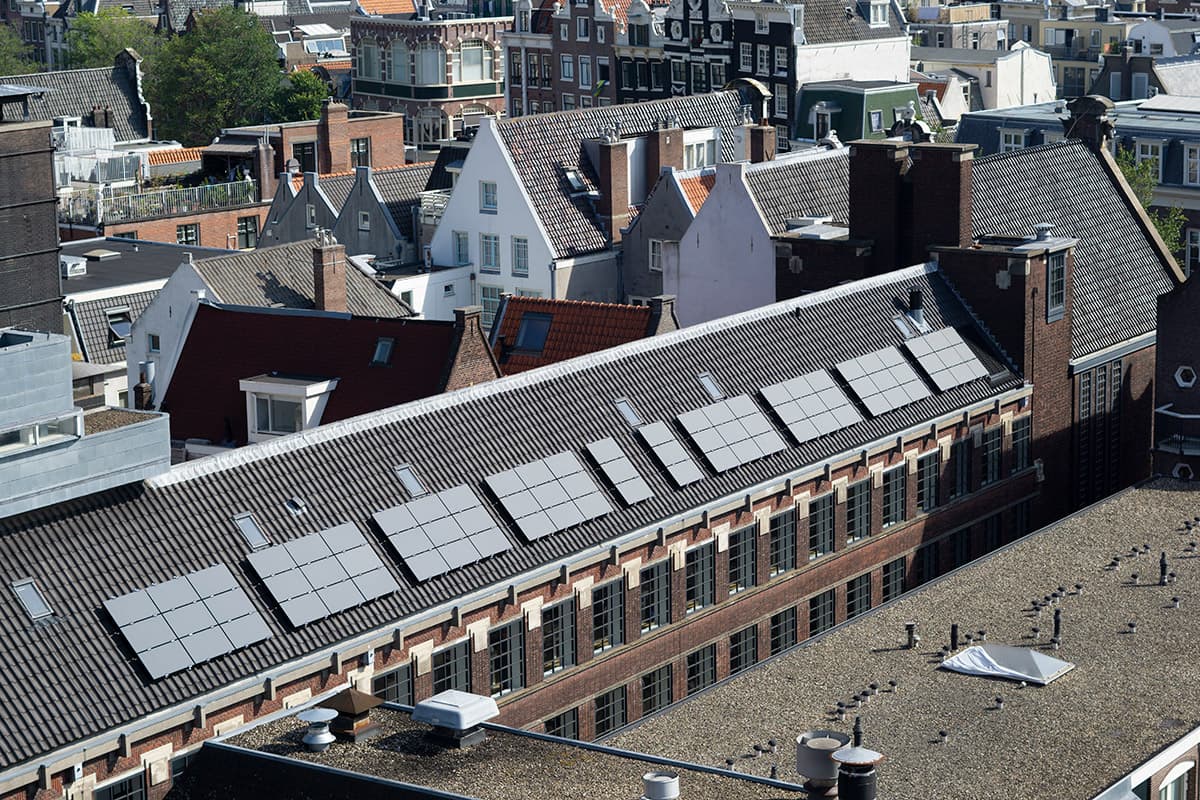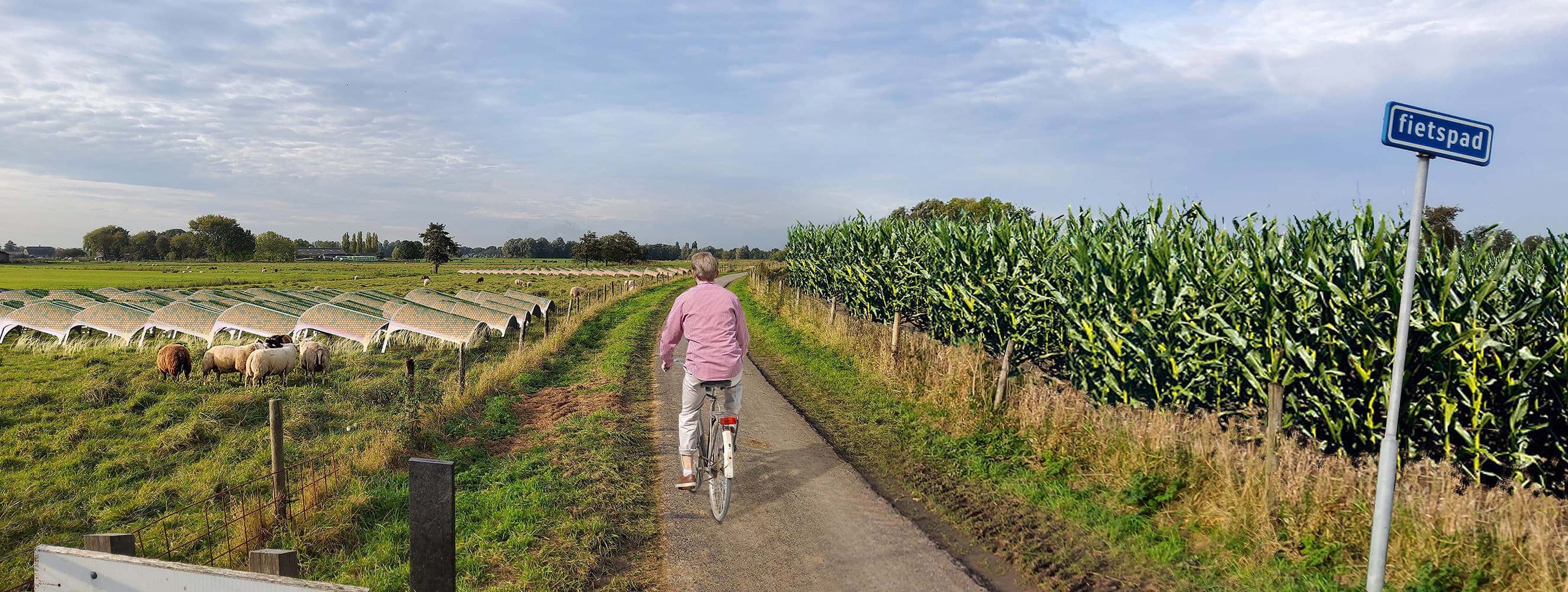
The Sun Beetle
The project
As part of the design research 'Landscape of Desire' into energy landscapes in the Lopikerwaard, four design teams started working to come up with innovative ideas for solar fields for two study areas. We started working on the landscape of desire in a multidisciplinary team of DS landscape architects, Solarix and Theo Heldens, and were given the energy issue to think about the Levees.
This created 'The Sun Beetle', a lightweight and idiosyncratic energy-generating element that adapts to landscapes and seasons.
“Looking for a form that fits in with a society that is already looking for solutions in permaculture, local production, renewable materials and shared ownership.”
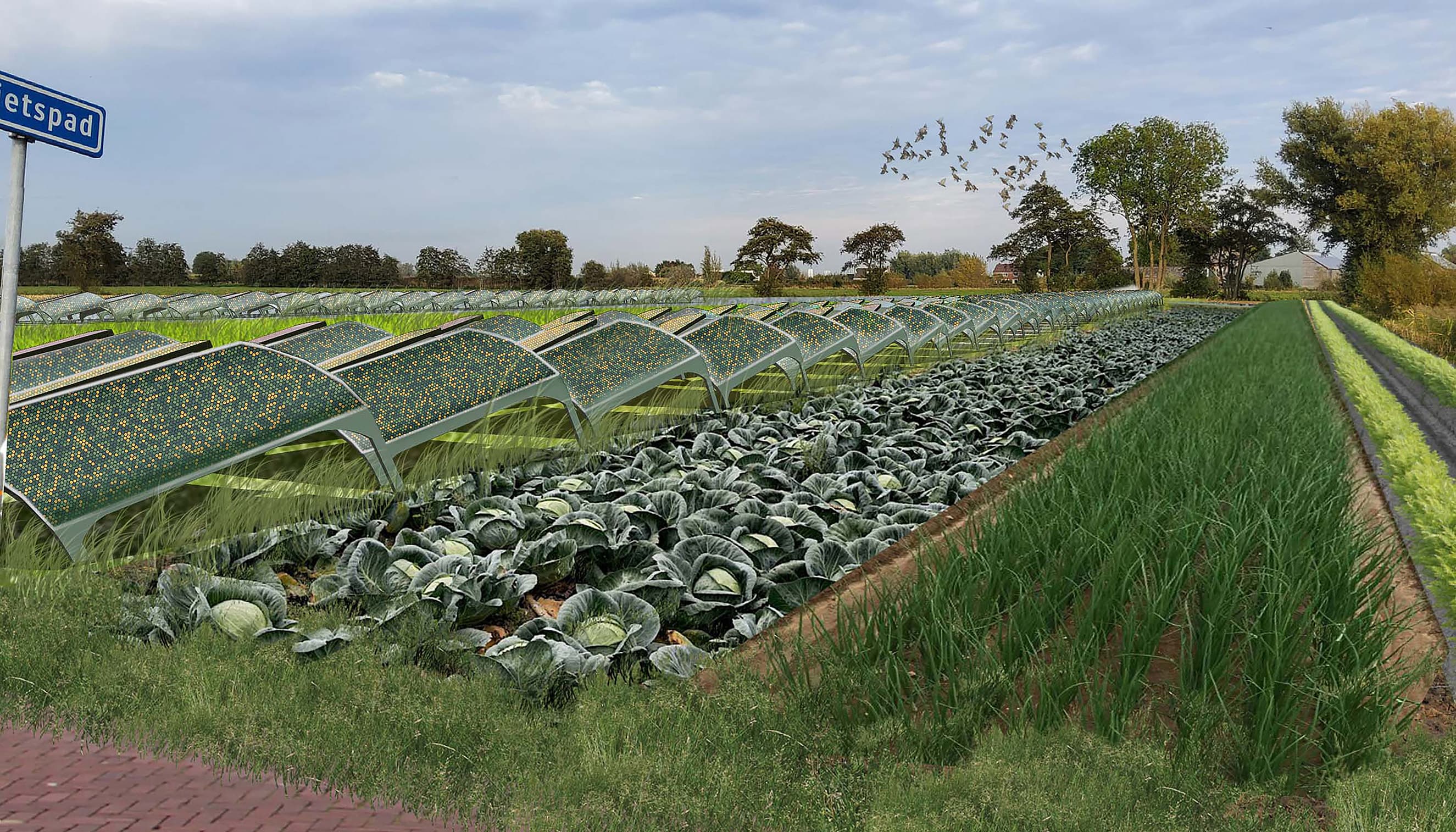
Solarix panels
The Sun Beetle consists of a lightweight circular base in which solar cells are integrated. This is provided with a coloured Solarix solar film. The designed colour fits beautifully into various landscapes and evokes an entirely different feeling than the traditional black solar fields.

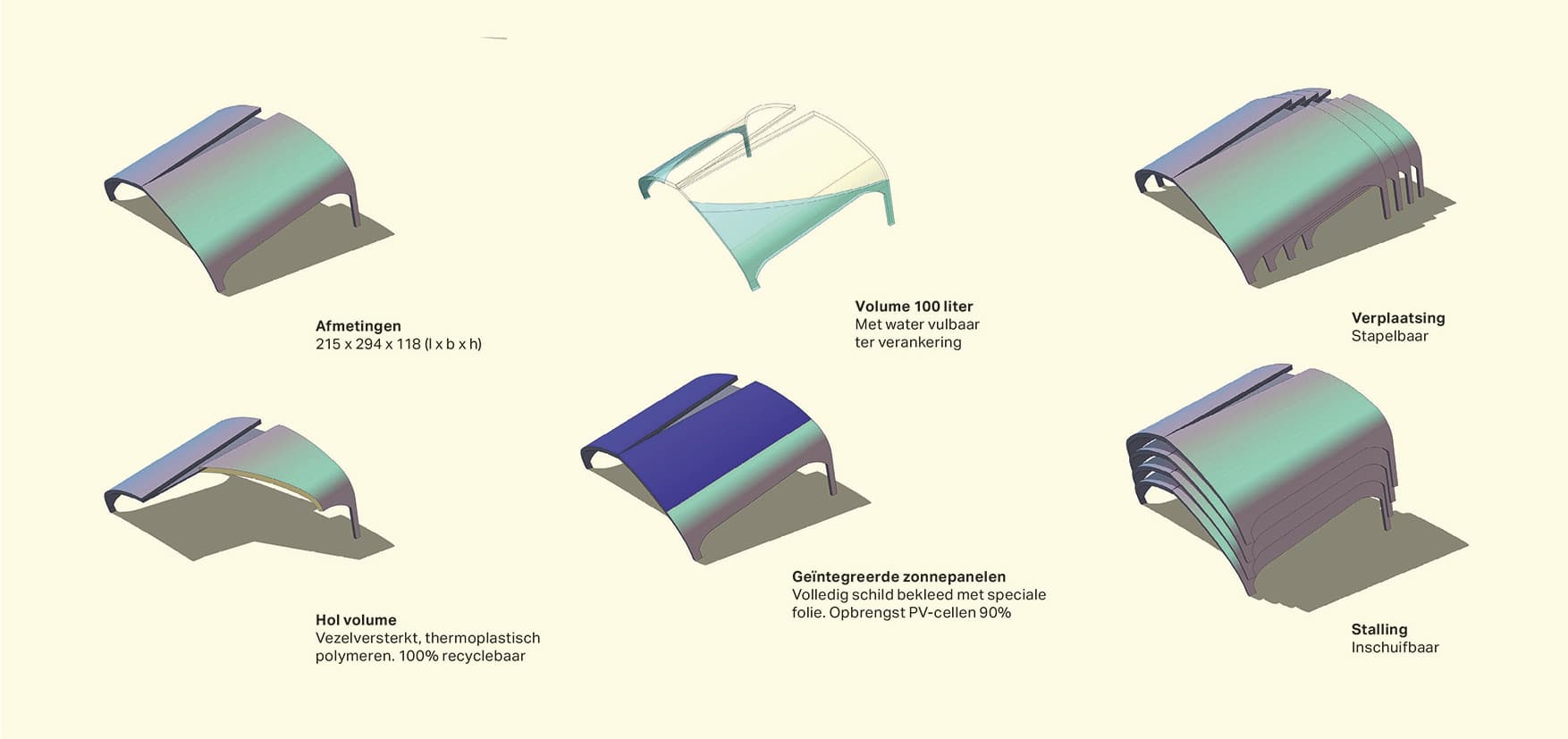
Process
The concept for The Sun Beetle arose from the collaboration with DS landscape architects and Theo Heldens. Solarix has provided input on the technology, circularity, manufacturability and colour technology.
Team composition: DS landscape architects, Solarix, Theo Heldens, and input from Stijn Dries
Client: AORTA, five municipalities in the Lopikerwaard, PARK and MooiSticht, made possible by the Creative Industries Fund NL.
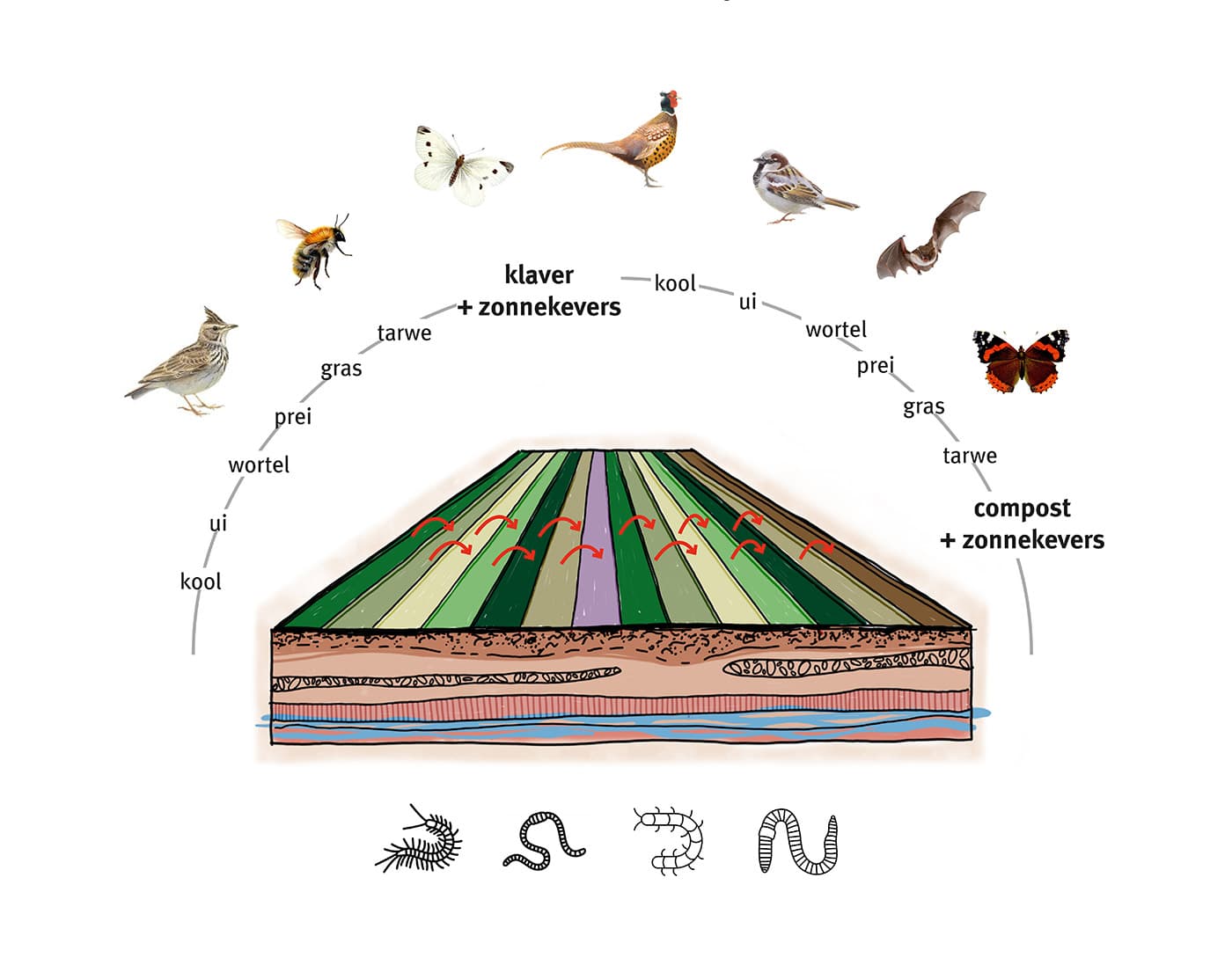
Read more about the project
As part of the design research ‘Landscape of desire’ into energy landscapes in the Lopikerwaard, four design teams set to work to come up with innovative ideas for solar fields for two study areas. This concerns peatland to the north of Oudewater and the banks of the Hollandsche IJssel to the north of IJsselstein. Both area types have their own structure and character and require a separate approach. The results of the research also serve as inspiration for similar areas in the Netherlands. For the landscape of desire, we started working in a multidisciplinary team of DS landscape architects, Solarix and Theo Heldens, and were provided the opportunity to think about the Levees as an energy issue.
Temporary and quirky energy generating element
In the coming years, we see space being created on the levees due to the shift from animal feed to food production for humans. In this new arable landscape, ‘the Sun Beetle’, as a temporary and quirky energy-generating element, moves with the seasons and years. The Sun Beetle thus fits in with the desire to maintain a small-scale and varied recreational landscape until a new generation of integrated energy generation presents itself.
Energy issue embankments
The installation of the current generation of solar panels offers a technical solution to the energy issue in the region, but no added value for the landscape and local residents. The landscape on the embankments is small-scale, varied and a popular destination for holidaymakers. The decor is mainly determined by cattle breeders. The paths lie between cattle pastures and fields for animal feed production. The current solar panels are produced in China, far away and under unknown working conditions. The solar panel consists of solar cells between glass plates, fixed on a sturdy aluminium frame with a concrete foundation. They are rigid and oriented to the south. An impenetrable fence surrounds the field. Slowly growing grass is sown under it.
‘Healthy’ and locally produced
In our opinion, a solar panel that is ‘healthy’ and locally produced fits within the embankments. In addition, it offers flexibility in placement and orientation, and can be coloured. With these parameters in mind, we started designing with already available lightweight PV modules that have a 25% lower CO2 footprint, save 50% in weight and are 100% recyclable and can be used on curved surfaces in the future.
Feed is grown on at least 240ha between Montfoort and IJsselstein. We only need 50 ha of solar panels to generate 35-45 gigawatts per hour. Suppose that the plots for 1/05 are covered with solar panels, then we meet the demand of the municipality of IJsselstein.
Lightweight and recyclable
We believe that the new lightweight, recyclable PV modules that have emerged from our research are ideally suited for the Solar Beetle. They are currently being prepared for large-scale production. The 2×1 meter base panel weighs ten kilograms. The Sun Beetle’s shield is made of recyclable plastic and can be filled with water for extra weight. The beetles are stackable and can be moved in larger numbers. A Sun Beetle weighs a total of about 25 kilograms. The Sun Beetles are on land that needs to settle down. Think of the meadow after grazing or a plot after crop rotation.
Sun beetles provide a varied, more natural and healthier landscape as a backdrop for recreation. The solar beetle consists of an armour with integrated solar panels. The surface is 4m2. The yield is about 90% compared to the standard black panel.
The sun beetle is anchored in place by filling it with water. Finally, the solar beetle made of bioplastic, and therefore 100% reusable after work is done. The sun beetles can be made in any desired colour so that they enhance the landscape experience for the tourists. Our levee beetles are bicoloured. The colour changes by moving along it. This is fun for the passer-by, the way there is different from the way back. And up close, it’s an intriguing array of colour pixels.
